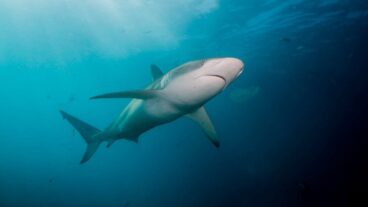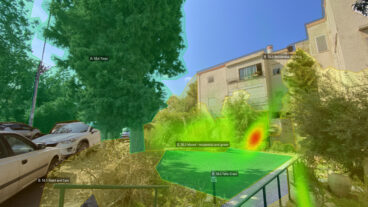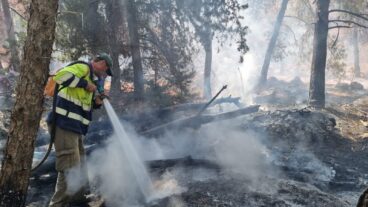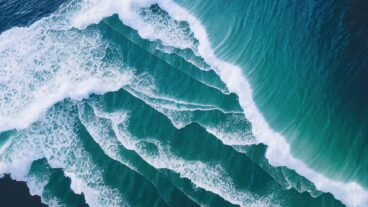An infusion of governmental funds aims to keep natural and human occurrences from washing ancient artifacts out to sea.
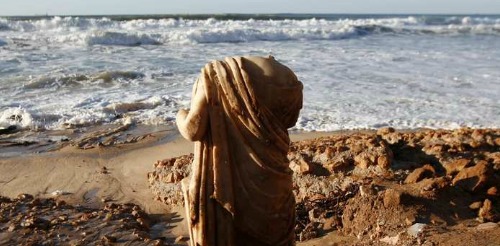
No one knows when she lost her head or arm, but the 1,500-year-old sculpture believed to depict the Roman goddess Aphrodite rolled out into the Mediterranean Sea last December, looking as fresh as the day she was made. Her discovery after falling out from an escarpment onto the coast of Ashkelon, a southern Israeli city near the Gaza Strip, highlights Israel’s growing need to protect its eroding coastline.
A new government initiative worth $135 million will turn about 10 miles of stretches of the Israeli coast into a series of reinforcements and public parks to be enjoyed by locals and tourists. Some of the parks will run through archeological sites of interest.
Geological archeologist Dr. Beverly Goodman, from the University of Haifa’s Leon Charney School of Marine Sciences, stands to receive some of the much-needed funds for her research on coastal tsunamis and underwater geo-archeological surveying.
She tells ISRAEL21c that coastal protection is a social, cultural, economic and environmental imperative. “The coastal area is extremely important because so many infrastructure facilities lie on the world’s coastlines,” she says, “whether it’s a power station; a cosmopolitan area like Tel Aviv, which includes hotels and tourist sites; and, of course, nature areas. These are all things that rely on the coastline being protected, and kept stable and somewhat reliable.”
Antiquities are being eroded
Goodman explains that the economy of every country is impacted by how its coastline is protected. “The majority of the world’s population lives on the coastline, within one kilometer. And daily life is most heavily impacted there. If you look at a nighttime map of the Earth, you can make out the continents by looking at the coastal regions. This shows how dominant the coastline regions are,” she says.
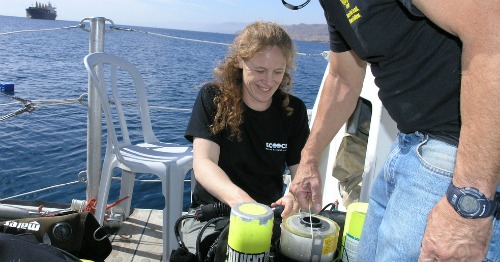
Working in and around Caesarea, where she has surveyed underwater archeology remains and geophysical properties of the ancient port city built by the Romans, she hopes at least to record what is underwater and on the beach before more culture is lost through natural erosion processes or damaging winter storms.
“What we are looking at in Caesarea, on the coastal cliffs, is that we have areas where the coastline has changed so much – and we actually have antiquities that are being eroded into the sea.”
Last December, a devastating winter storm hit the length of the Israeli coast, exposing archeological remains. The storm temporarily closed down the modern-day Caesarea National Park and caused great damage to the ancient port city.
Goodman had just finished recording details about the seafloor and archeological remains. After the storm, she returned to her underwater lab to find that some 80 percent of what she’d surveyed had been destroyed or washed away.
This makes Goodman very relieved to know that the State of Israel will support this unique cultural heritage site.
“For the short term, we don’t know how to protect what’s there and we want a record before it’s destroyed. That’s the purpose of [my] research, from the protection aspect. I am also looking at geo-archeology research questions. Within those coastal features, we are studying the sediment and what happens over time.”
The barefoot archeologist
Her field of underwater archeology is almost as old as scuba diving itself, but studying ancient tsunamis – including one that is thought to have devastated Caesarea thousands of years ago — is very cutting edge.
Rather than doing a lot of excavating, she says, “one can go to a site and get a cut section of archeology without having to dig for it. We are also working on the coastline on the beach, sometimes barefoot — and underwater, of course, where we are diving and using excavation equipment.”
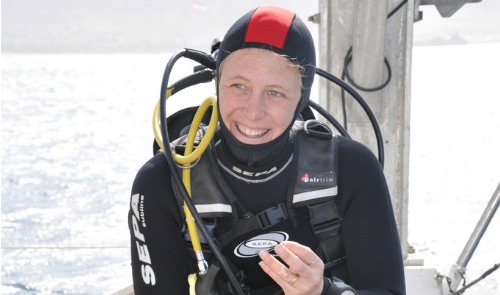
Besides the geological aspects of her work, the intimate human side of what she sees underwater fascinates Goodman. Personal items she locates underwater can be quite exciting. A 2,000-year-old sandal caught her attention not long ago. Perhaps it was once worn by a fisherman?
“It was something that seemed so real to me,” she says about the size 7 men’s sandal that is being prepared for display. “It was something so personal and I know the annoying feeling when you lose one sandal,” she says. Other ancient items she’s unearthed include women’s hair combs and earrings.
Securing the past and future
According to the Israeli government, the new coastal protection fund will allow for a network of public parks along the coastal area from southern Ashkelon to northern Haifa.
The parks will reinforce precipitous slopes that fall off periodically, damaging real estate and even occasionally killing beach-goers who don’t heed the warnings to sunbathe away from the dangerous coastal escarpments.
Historically, Israel’s coastal area is important not only for today’s population. According to the Christian Gospels, the Apostle Peter was imprisoned in Caesarea after being arrested in Jerusalem, and an inscription bearing the Christian scriptural name Pontius Pilate was found here.
The area began to take shape after King Herod built the world’s first artificial port in Caesarea, in 22 BCE, to be the seat of the Roman government. The ancient Jewish historian Josephus noted that “the firmness of his building could not easily be conquered by the sea.”
He’d obviously never heard about global warming.





